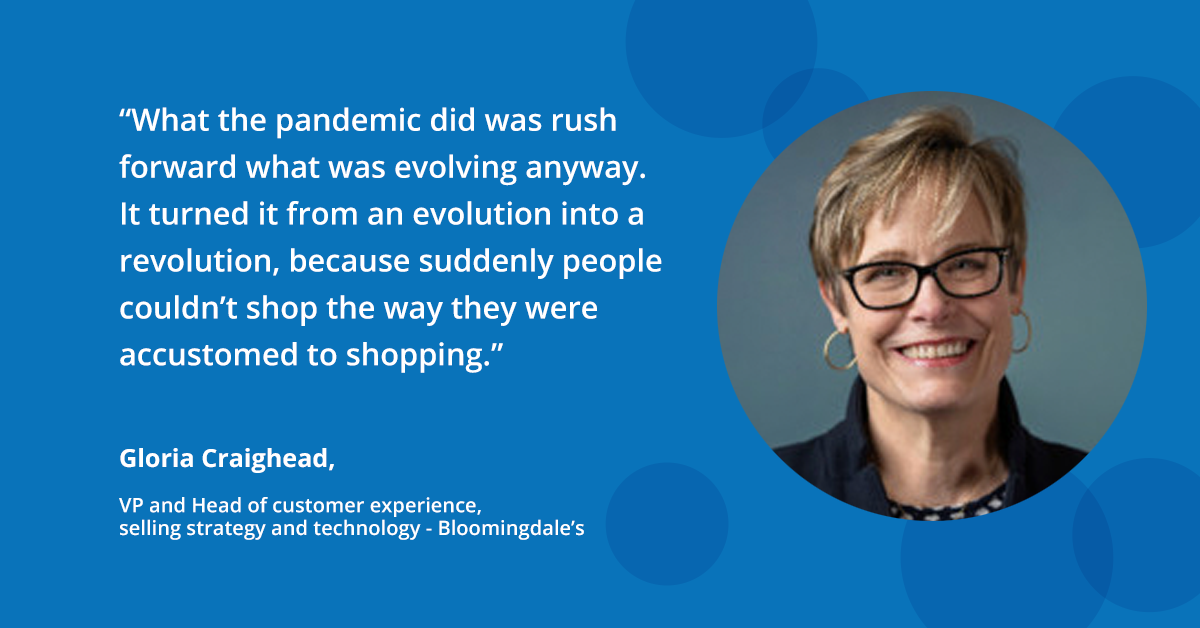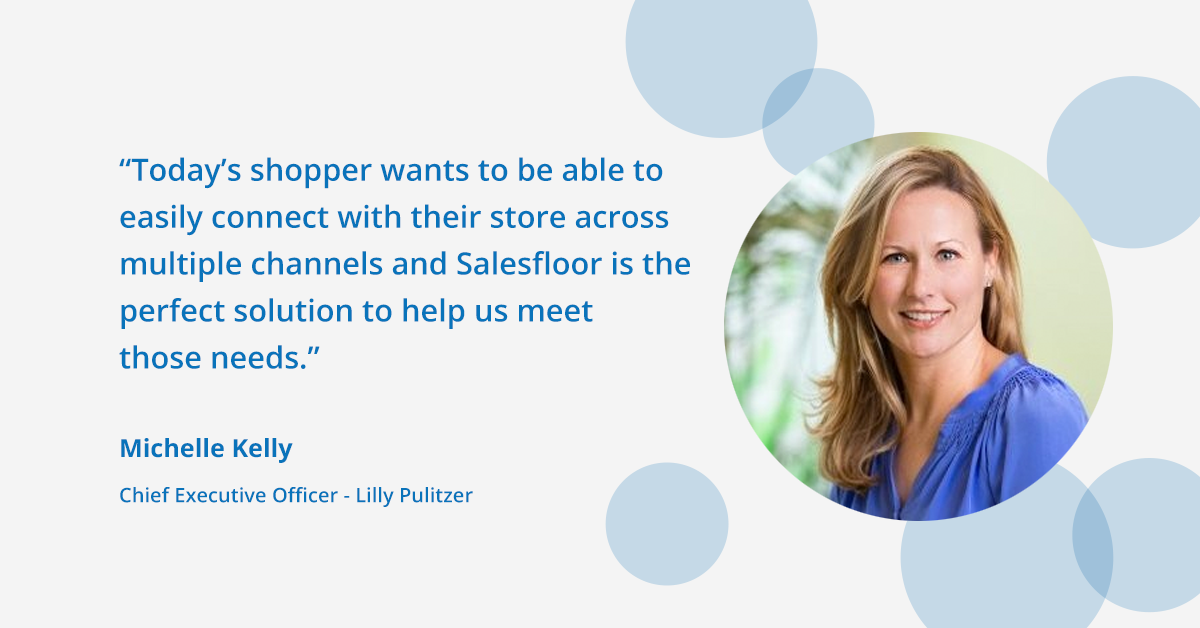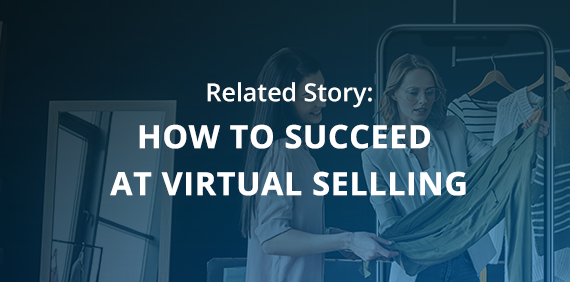Understanding the Virtual Store:
Did you know that retail sales in the US declined 10.5% in 2020 compared to the previous year?
As the industry continues to recover from the pandemic, retailers must come up with new, innovative ways of connecting with their customers, — if they want to stay relevant and be profitable.
Technology has long been blurring the lines between retail and ecommerce, and many companies have realized that the only real way to stay competitive is to offer holistic customer experiences.
One way to accomplish this is through interactive virtual stores where you can deliver personalized, authentic, and immersive in-store shopping experiences to your customers online.
But before we get down to the nitty-gritty of virtual shopping and how to implement it, let’s try to get a better understanding of what exactly it is. While we’re at it, we’ll also take a look at some very interesting virtual stores in action.
Let’s get started.
What is a virtual store?
Virtual stores are digital versions of real-life, physical stores that allow customers to navigate them just as they would in real life, but from the comfort and safety of their homes.
While online shopping usually entails customers having to browse through never-ending product lists on ecommerce websites, virtual store experiences are a lot more fun, immersive, and personalized. You can implement them in a number of different ways.
For example, you could use computer simulation to create a 3D model of your actual retail store that can be accessed on the web or from an app. Think of it as a virtual shop where customers can walk through aisles, zoom in on products that they like, and add them to their shopping carts. These are known as 3D virtual stores. They’re a refreshing new alternative to the typical online store because they give customers 3D views of products, enabling them to inspect them in more detail.
You could also opt for a virtual reality store that customers can experience using their own VR headsets. Much like 3D virtual stores, VR experiences allow shoppers to view or even “hold” items so they can see it from various angles. This strategy, however, has its limitations. Accessibility is a key issue since customers need specialized equipment to be able to experience a virtual reality store.
Another option is to enhance your existing ecommerce site with technology that transforms and enriches the virtual experience — incorporating one-on-one consultations with store associates into them. This solution allows customers to connect with their local store associate through live chat, text, or video directly from your ecommerce platform to get real-time assistance and personalized recommendations as they browse.
Benefits of virtual stores
Regardless of how you implement it, virtual shopping is all about bringing real shopping experiences from actual stores or showrooms to the customer’s home. Virtual stores offer a number of benefits over traditional online experiences. Let’s take a look at some of them.
1. Instant, personalized service – Virtual stores allow customers to connect with store associates in real-time so that they can get their questions answered instantly. For example, Salesfloor Connect integrates into your ecommerce site to enable shoppers to connect with a local store associate over video, chat, text, or email from any page of an ecommerce site. This allows them to get personalized product recommendations, ask questions, or learn about other related products – exactly as they would in a physical store.
2. Immersive, engaging experience – Virtual stores usually offer interactive shopping tools that allow customers to have a more immersive and engaging shopping experience. For example, Salesfloor offers a virtual co-shopping experience in which customers can share their screen with an associate so that they may navigate the site and shop together in real-time.
3. True-to-life product representation – Perhaps the biggest limitation of online shopping is the inability to inspect a product before buying, which is something that can only be achieved in-store. Virtual stores, however, allow customers to see the products for themselves through 3D virtual stores, VR or by having store associates showcase them over video for a more realistic preview. This enables customers to make more informed decisions.
Some great examples of virtual stores in action
Now that we’ve covered the basics, let’s take a look at some shining examples of virtual stores and virtual shopping in action.
1. Saks Fifth Avenue – Luxury department store chain, Saks Fifth Avenue, offers virtual shopping at multiple store locations using technology from Salesfloor. Customers can connect with a store associate via text, chat, video, or book an appointment for an assisted shopping session. They can get access to all 11 floors of the New York Flagship store via video chat and even choose to receive personalized digital recommendations from a Style Advisor.

Lilly Pulitzer – Women’s apparel brand, Lilly Pulitzer, uses Salesfloor’s technology to provide personalized, engaging virtual shopping experiences to its customers. Customers can connect with a local store associate directly from the website to get real-time assistance and personalized recommendations.
As you can see below, Salesfloor’s Storefront feature allows customers to interact with a trusted expert at their nearest store and view top recommended products using interactive shopping tools. Customers choose how they would like to connect – over live chat, video, email, text message, or booking an appointment for a personalized consultation.

3. Charlotte Tilbury – Skincare and makeup retailer, Charlotte Tilbury, unveiled their exciting new virtual store in November last year. Their intent was to enable their customers to have the in-store experience that they were missing out on amid the lockdown and quarantine life from the safety of their homes.

The virtual store emulates a typical Charlotte Tilbury store and has familiar visual merchandising that you would see at their retail outlets. You can navigate the store using your mouse, click to view and add products to your cart, or book a virtual consultation with a beauty expert.
4. Ralph Lauren – This virtual store experience is modeled on Ralph Lauren’s Beverly Hills showroom and provides an immersive, engaging experience that’s almost as good as the in-store experience. They’ve even recreated the music that you would normally hear at the store.

You can click or drag the screen using your mouse or use the arrows to navigate different sections of the store. There’s also a side menu that you can use to explore various departments directly, without having to walk through the entire virtual space. The interiors are rich and are exact replicas of their offline store.
How to enable virtual shopping at your store
For small and medium-sized retailers, creating virtual stores that are exact replicas of your physical stores might not be quite viable, financially. Both the Charlotte Tilbury and Ralph Lauren experiences are powered by specialized virtual store software.
Fortunately, there are simpler and more cost-effective ways of providing your customers a virtual shopping experience right from your own ecommerce site. With solutions like Salesfloor Connect, you can create personalized virtual experiences by enabling customers to connect with store associates instantly with just a click.
Customers can initiate a conversation through a medium of their choosing (i.e, live chat, video, text messaging, or email). They can even request to book a virtual or in-store appointment for an assisted shopping session at a convenient time. Store associates help answer their questions instantly, showcase actual products over video, and offer personalized product recommendations.
With Salesfloor’s solutions, you can provide your customers the same level of engagement and service that they would normally expect in-store. The added benefit is that they can enjoy the virtual shopping experience from the safety and comfort of their homes.



